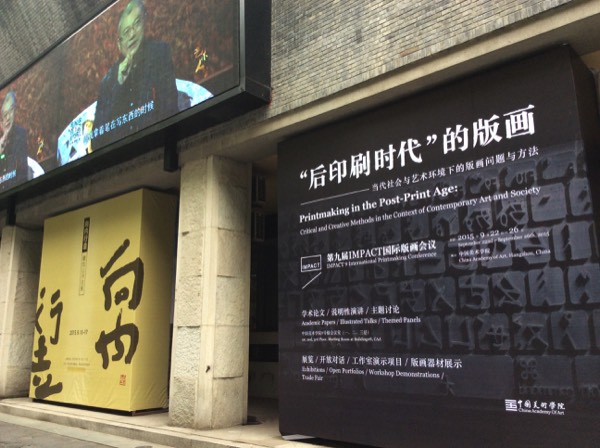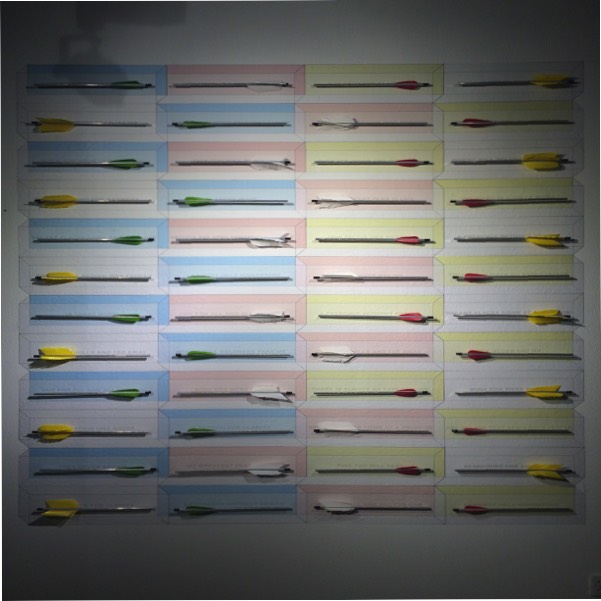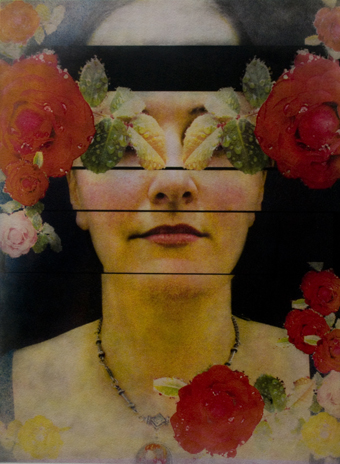ANTONIETTA COVINO-BEEHRE
creating original artwork for commercial and domestic environments
IMPACT 9 International Printmaking Conference
22 - 26 September 2015

Printmaking in the Post-Print Age: Critical and Creative Methods in the context of Contemporary Art & Society
Throughout its history, art has been understood variably as being about technique or beauty or something entirely different. Yet differences in our individual interpretations or value systems aside, art has fundamentally always been about our relationship with nature. So as the virtual begins to colonise nature, where do we stand? What is art? Meanwhile, there is an inextricable bond between the development of printmaking as art and that of printing as technology. So in the post-print age, what has the art of printmaking become? What challenges and new areas of potential are we presented with? This will be the focus of the IMPACT 9 International Printmaking Conference.
The Organising Committee welcomes multidisciplinary contributions to, but not limited by, discussion of the following issues:
How can the heritage of printmaking be defined according to the unique historical backgrounds of different cultural contexts? What are the stories of its origin in different locales? What cultural status and meaning does printmaking hold historically? And how does the current practice of printmaking relate to its past?
How has the cultural status and role of printmaking evolved in relation to broader historical changes and technological developments? Do shared materials or techniques in traditional printmaking processes nonetheless vary in meaning according to different cultural contexts?
Is digitisation truly revolutionising the art of printmaking? If so, how, and what problems arise? Do we need to redefine the boundaries of printmaking as a discipline and if so how ?
An important issue for art critics is whether or not post-print age printmaking shares those challenges of interpretational and value judgement encountered in contemporary art in general, and if so how should they be approached? How can the current state of printmaking inform contemporary criticism?
http://impact9.caa.edu.cn/ThemeTopics/
One for All and All for One
This exhibition for Impact 9 - “All for one and one for all” follows this cross mixing of ideologies.
It consists of a series of arrows hanging within a virtual enclosed vertrine boxes. The arrows have all been hand made with the use of text and symbols.
Several of the arrows have been left untreated and a selection have had ink rubbed into their masticated surface.
The ink within these surfaces has the appearance as if oozing from these depths thus giving shape to something more complex in understanding than its initial encounter.
The materials I have used for this project are important - they have been selected for their power to evoke feelings on many levels. It is like play of seduction - to draw the viewer close to its proximity, to examine the arrows and their symbolic significance as well as to decipher the words and marks on their body. Eliciting an exploration beyond materials or techniques and into the mind of thoughts and sensations.
This unconventional wall installation aims to provide a context for discussion, enjoyment and understanding of contemporary printmaking practices. With this said my aim has always been to broaden my visual practice and vocabulary the techniques gathered and extend this to the wider community, connecting and integrating distinctive creative methodologies - characteristic of contemporary art practice in addition of contemporary printmaking practices.
Eyes Shut
In ‘Eyes shut’ a collection of etchings are presented embodying a feeling of longing. The images seek to expose our hidden interactions and the parts of us that slip between the folds of history and imagination.
'The world is large, but in us it is as deep as the sea.’
Rainer Maria Rilke (Austrian poet)
‘To make people free is the aim of art, therefore art for me is the science of freedom.’
Joseph Beuys (German Artist)
A selection on works printed from photo etched plates and photopolymer plates (Printed on rag paper 600gsm).
In ‘Eyes Shut’ a collection of etchings are presented embodying a feeling of longing. The images seek to expose our hidden interactions and the parts of us that slip between the folds of history and imagination. I have revisited the themes of the portrait and the body in these works, showing a thematic continuation, via an aesthetic deviation, from my past projects, such as Faccia a Faccia / Face to Face Wall Series, spanning some twenty years of artistic practice.
‘Eyes Shut’ describes a state of being where preconceptions are attached to everything we think and see in our everyday lives.
The minute we stop and use our senses to view and experience what is really around us, we are faced with a new revelation.I describe this experience as ‘a quiet kind of surprise, one that enlightens us a little from our earlier perceptions and which enables us to enter a realm of discussion’. The work itself acts to enable these revelations and discussions, becoming an interactive experience, rather than a passive encounter.
Produced as Intaglio-etchings, I confesses that the focus of this collection is not on the technique, but on how the medium can be used as a form of expression.
In the work, I take familiar faces and juxtapose them in different scales. Through their familiarity, the images can be read a portraits of the self, the community and of humanity at large. The meanings of these kaleidoscopic portraits are elusive and multilayered, revealing but a fragment of the complex whole.
The flower rose motif is repeated in the collection and acts as a symbol for the survival of these individual fragments. A Flowers own ability to claim a space for itself in the environment, acts to inspire the subject in the portraits and the viewers of the work. The flower is also a timeless symbol of a truth that is mysteriously and wordlessly conveyed. Its scent is its vehicle of communication and the message it sends is to open one’s eyes and to become conscious of one’s subconscious perspectives.
Antonietta Covino-Beehre

